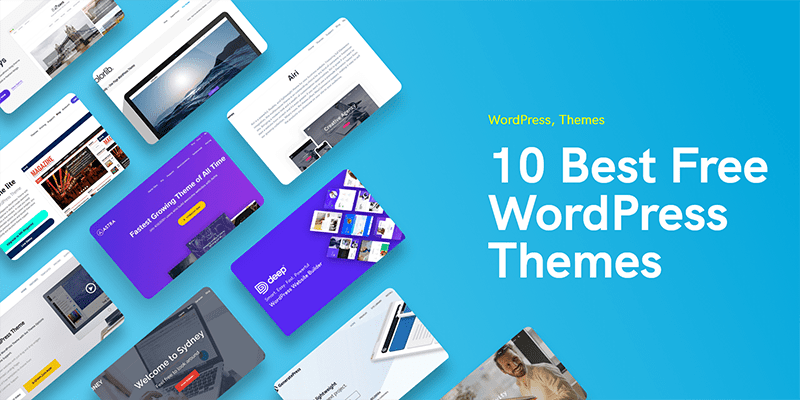There is a current popular obsession with optimizing content to perform well in online searches. Given this, it’s no surprise that many bloggers write as if their target audience is made up of bots and not human beings. It’s true that it is important for your blog posts to show up in search engines. However, if your content quality is poor, readers won’t stick around long enough to discover your message or purchase your products.
To help you ensure that you’re creating compelling content tailored to your target audience, review the following 10 tips. Use them as a checklist as you sit down to draft your next blog post.
Identify and Address a Specific Audience in your Blog Writing
 Before you start writing, it’s critical to determine who you’re trying to reach and then develop your content accordingly. Who is your target audience? What is their educational level? In what industry do they work? What is their family life like? And most importantly, what problem of theirs do you plan to solve with your content, product or service?
Before you start writing, it’s critical to determine who you’re trying to reach and then develop your content accordingly. Who is your target audience? What is their educational level? In what industry do they work? What is their family life like? And most importantly, what problem of theirs do you plan to solve with your content, product or service?
According to marketing expert Roger Bryan, every post you publish should be informative, interesting and relevant. If it meets those criteria, readers will return to your blog for more of what you have to say.
But what type of audience to address?
- Informative content offers useful information to readers. It does this by answering a question or teaching them something they didn’t know. This type of content may be instructive, such as a recipe or directions for building something. Conversely, it may provide previously unknown information about your specific product or service and what it can do for your readers.
- Straight information isn’t sufficient to convince your audience to read to the end of a post. Gotta be interesting. Incorporate trivia, statistics, analogies and funny or attention-grabbing stories are all effective at keeping readers engaged in your content. You should also maintain a conversational tone with most audiences. Additionally, avoid using highly technical jargon that may confuse, bore or annoy readers.
- Content also needs to be relevant. Not only to the target audience but also to the subject, industry or company about which the piece is written. Conduct sufficient research about your topic and the needs and interests of your readers. This will help you make sure that your content is both meaningful and useful to them.
Go Against the Flow
 Chances are, you’re not the only blogger writing about a given subject. This is especially true if it relates to events in the news or other trending topics. If you want your post to stand out, you need to approach your subject from a new angle. You can also take an unusual position or even play devil’s advocate.
Chances are, you’re not the only blogger writing about a given subject. This is especially true if it relates to events in the news or other trending topics. If you want your post to stand out, you need to approach your subject from a new angle. You can also take an unusual position or even play devil’s advocate.
As notable personal finance advisor and entrepreneur Ramit Sethi describes it, “Whether you’re trying to get a date or start an online business, if you’re the same as everyone, you’re doomed. This is where the concept of zigging and zagging comes in. Where others zig, you zag.”
This “zig-zag” technique is simple. Determine what the current conventional wisdom is on a topic. Then, take the opposite approach—or at the very least, look at it from an unexpected angle. Look for ways you can bring a unique, controversial, or even shocking perspective to an issue or idea. Do this, and your post is much more likely to be read and shared than if you simply repeat everyone else’s tired take on the subject.
Hook their Attention with Your Headline

The “80/20” rule regarding headlines is often attributed to advertising legend David Ogilvy. He believed that the headline was the key to an effective ad. The idea is that on average, 80 percent of people will read the headline or title of a piece. However, only 20 percent will go on to read the rest of the copy. The more compelling you make your headline, the more likely it is that your audience will continue reading beyond it.
Early on in their training, most copywriters learn the gold standard for writing headlines that work. This is commonly referred to as the “Four U” approach, in which headlines should:
- Be useful to the reader
- Demonstrate a sense of urgency
- Describe how the content conveys something unique
- Accomplish the above tasks in a way that is ultra-specific
As you’re developing your headline, test your ideas against the following guidelines:
- Does your headline communicate what the reward is for reading your piece?
- Does it include specific details to make it both compelling and convincing?
- Will your headline tap into strong emotions or convictions the reader already holds about the topic?
- Does it propose an idea that will resonate with readers?
- Does your headline include an element of mystery, intrigue or curiosity?
If the answer to any of these questions is no, go back to the drawing board. Don’t be afraid to invest a substantial amount of time into writing your headline. After all, it’s the most-read—and therefore most important—part of every post you’ll ever write.
Reel them in with Your Introduction

An outstanding headline might get your readers in the door, but a great introduction will convince them to stay.
Your goal with these three to five sentences is to pique your readers’ interest and identify the central idea and purpose of your post. You can accomplish this by:
- Asking a question
- Making a bold or controversial declaration
- Telling a story or joke
- Using emotional appeal
- Sharing a surprising or interesting fact
Use vivid imagery and sensory details to evoke a connection with your readers. Leave just enough mystery to make them want to continue reading to find out more.
Weave in Personal Anecdotes
Storytelling is king. From our earliest ancestors sitting around campfires sharing legends of old to the modern-day blockbusters that capture our imaginations at the cineplex, you’d be hard-pressed to find anyone that doesn’t respond to a good story.
In blog posts, personal stories are a highly effective way to draw readers in and establish a connection with them. They also help make information more relatable: readers would much rather read about how you personally overcame cancer than read dry, impersonal statistics about how many people are diagnosed with cancer each year.
Personal stories can also help establish your credibility on a topic, which builds trust with your audience and establishes you as a subject matter expert on that issue.
Add Images and Video to Your Posts
 In our fast-paced culture, images and video are becoming increasingly important elements of our communication. People who may not have the time to read a long blog post or article will skim it for photos, or they’re willing to watch a video or listen to a podcast on the same topic.
In our fast-paced culture, images and video are becoming increasingly important elements of our communication. People who may not have the time to read a long blog post or article will skim it for photos, or they’re willing to watch a video or listen to a podcast on the same topic.
Research has clearly shown that incorporating graphics and video into content can dramatically increase its reach. For example, online articles with images receive 94 percent more views than articles with no images. Images also enable our brains to better retain the information we take in, known as the “picture superiority effect.” Images also make readers more likely to engage with and share your content on social media.
Likewise, embedding video in your blog posts is shown to garner greater attention and higher retention rates. Additionally, this shows a stronger emotional connection from readers than posts that don’t include video.
Fortunately, it’s easy to find high-quality, compelling images online, and many of them are available for free use with proper attribution. This compilation of free and inexpensive image sites is an excellent resource as you work to incorporate more rich media into your blog posts.
Make Your Posts Easy to Scan
As much as bloggers want to believe that their readers slowly savor every word of their posts, the harsh reality is that the vast majority of people simply scan content for important points. According to a study by Nielsen, almost 80 percent of people just scan online news pages, while only 16 percent stated that they read articles word-for-word.
With those sobering statistics in mind, you should organize your posts to be as easy as possible for readers to quickly skim. The following structural elements can help you appeal to habitual scanners as well as dedicated readers.
Structural elements
- Use bullets to make long lists of words or ideas more digestible.
- Use formatting—bold and italic type, underlining and even all-caps—to emphasize points where appropriate.
- Break up long stretches of text with headings and subheadings—they not only fight reader fatigue but also help summarize important concepts.
- Keep paragraphs short, typically three to five sentences at most, as long blocks of text can be a turnoff to readers.
- Be straightforward and concise with your main points and deliver them early in the article or paragraph. Don’t bury them near the end.
- Incorporate white space to make your page more visually appealing and give readers’ eyes a rest.
You should also be strategic with your word count. An extremely short post of just a few hundred words suggests you don’t have much of importance to say about a topic, while a 5,000-word post will scare off all but the most dedicated readers. Your research should give you a sense of the length your target audience prefers, but in general, a word count of between 1,000 and 2,000 words is a safe goal.
Don’t Completely Disregard SEO

While the main idea of this piece is writing for humans and not SEO bots, it is possible (and desirable) to develop content that can appeal to both. After all, readers need to be able to find your well-written content in order to benefit from it.
Before publishing, review each blog post to ensure that it follows basic search engine optimization principles: titles that incorporate keywords, placement of targeted keywords in your first and last sentence, keyword anchor text and a solid keyword ratio within your content.
Be sure to include image alt tags with any photos you use and incorporate inbound and outbound links where possible. If your blog is a self-hosted WordPress blog, consider installing the Yoast plug-in. This works to identify opportunities for improving your SEO performance.
Demand Action
Regardless of what your topic is, you should close every post with a clear call to action from your readers. A call to action should address the audience directly and outline a specific next step for them to take. They can do this now that they’re armed with the valuable information in your post.

In some cases, your call to action may be a request for readers to purchase something. For example, maybe you’ve just written a post about the importance of preventive maintenance on trees. At this point, you might invite them to click on a link to schedule an evaluation by the landscaping service you operate.
However, a call to action may be as simple as asking readers to respond to a question posed at the end of your post. Another option is clicking on a link to a similar article that they may find helpful. An example of this would be something like “If you enjoyed hearing more about my kitchen renovation process, be sure to check out my post on financing home improvements here.”
Promote Your Content
When you’re first building a blog audience—and even after you have an established readership—promotion is critical to getting your post in front of readers. According to successful blogger Kristi Hines, “While awesome content is the only thing that will make you go viral, awesome content will never actually go viral if no one sees it.
Unless the world comes to your blog on a daily basis without any incentive, you’re probably going to have to go tell the world about your post through blog post promotion.”
Social media is the easiest and most effective way to share your blog content with a broad audience. Add a compelling comment about why the post is worth reading and share the link to the social networks most frequently used by your target audience. These will likely include Facebook, Twitter, Instagram, LinkedIn and possibly Pinterest.
Depending on the topic of the post, you may also try incorporating links to other blogs you consider relevant or interesting. If those blogs have enabled the trackback feature in their blogging platform, a link back to your blog will automatically be posted in the comment section of their posts, which can help build greater exposure for your blog.
In Conclusion
Search engine optimization gets the lion’s share of the marketing buzz these days, but never forget that your ultimate audience is made up of humans. When make it your primary objective to write compelling, relevant, high-quality content for your specific target audience, your readership numbers—as well as your SEO performance—will almost always follow suit.






